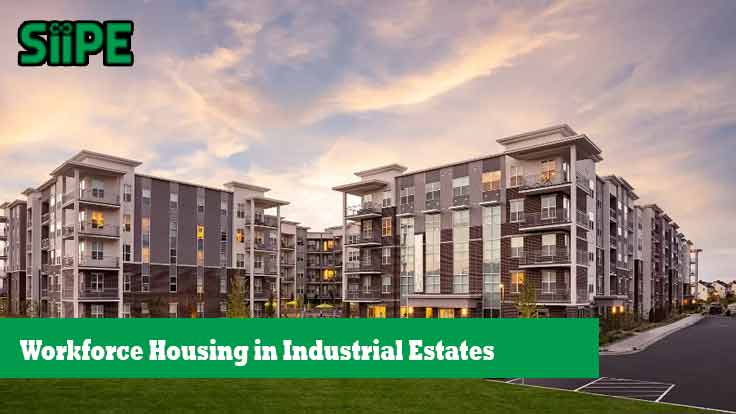As industrial estates expand across the globe, one crucial issue often overlooked is the housing of their most important asset—the workforce. Today, more and more developers and policymakers are recognizing the value of workforce housing in industrial estates. Not only does it improve workers’ quality of life, but it also enhances productivity, reduces turnover, and creates more sustainable industrial zones.
In this article, we explore what workforce housing means, why it matters, and how it can be implemented effectively within industrial estates.
What is Workforce Housing?
Workforce housing refers to affordable residential accommodations built specifically for workers near their place of employment. In the context of industrial estates, it involves designing living spaces within or adjacent to manufacturing or logistics zones so that workers can easily access their jobs without long commutes.
These housing units can include:
-
Dormitories or barracks
-
Apartments or flats
-
Family housing
-
Rental units with shared or private amenities
Why Is Workforce Housing in Industrial Estates Important?
There are several compelling reasons to prioritize workforce housing in industrial estates:
1. Improved Worker Welfare
Living closer to work means workers spend less time commuting, which reduces fatigue and stress. Better rest and more family time contribute to improved physical and mental health.
2. Reduced Absenteeism and Turnover
Companies that offer or support nearby housing often see higher employee retention. Workers are more likely to stay with a company if their basic needs are met conveniently.
3. Increased Productivity
When employees live near the workplace, they are more likely to arrive on time and be more focused at work. This can lead to higher productivity and better morale.
4. Urban Decongestion
Industrial estates located outside major cities help decentralize urban populations. By including workforce housing in the estate, there is less strain on urban housing and transportation systems.
Key Features of Successful Workforce Housing Projects
Creating successful workforce housing in industrial estates requires more than just building dormitories. Several factors contribute to livable, inclusive, and safe environments:
1. Accessibility
Housing should be located within walking distance or offer free shuttle transport to workplaces. Safe pedestrian paths and lighting are also essential.
2. Affordability
Rent or ownership costs must align with workers’ income levels. In many cases, public-private partnerships help subsidize costs or provide incentives to developers.
3. Basic Amenities
A good workforce housing complex includes:
-
Clean water and sanitation
-
Electricity and internet
-
Communal kitchens or food halls
-
Clinics or health centers
-
Recreational areas
4. Family-Friendly Options
Some workers prefer to live with their families. Mixed housing options should include larger units for families, as well as childcare and school access.
5. Safety and Security
Gated housing with 24/7 security, emergency exits, and health protocols ensures peace of mind for residents and employers alike.
Real-Life Examples of Workforce Housing Integration
Indonesia: Jababeka Industrial Estate
Jababeka, one of Indonesia’s largest industrial parks, offers worker housing clusters such as the Jababeka Residence. These areas provide affordable homes for employees of nearby factories, complete with amenities like shopping centers, schools, and places of worship.
China: Shenzhen and Guangzhou
China has long integrated dormitory-style worker housing within its industrial zones. In cities like Shenzhen and Guangzhou, companies offer housing blocks for factory workers, reducing turnover and improving factory efficiency.
Vietnam: VSIP (Vietnam–Singapore Industrial Park)
In several VSIP locations, residential zones are developed adjacent to the industrial area, including low-cost apartments and community centers, enabling workers to settle comfortably near their workplaces.
Challenges in Workforce Housing Development
While the benefits are clear, implementing workforce housing in industrial estates presents several challenges:
1. Zoning and Regulation
Not all industrial zones allow residential development. Local regulations must be adapted to encourage mixed-use development or designated worker housing zones.
2. Upfront Investment Costs
Developing housing requires significant capital, and private investors may hesitate without clear returns or government incentives.
3. Maintenance and Management
Ongoing management of housing facilities—cleaning, repairs, utilities—must be factored into the project’s operations for long-term success.
4. Balancing Privacy and Density
High-density housing can reduce land use but may also compromise privacy and living standards. Finding the right balance is key.
The Role of Public-Private Partnerships (PPPs)
Governments and industrial estate developers can work together through Public-Private Partnerships (PPPs) to:
-
Provide land at reduced cost
-
Offer tax breaks or incentives
-
Ensure compliance with health and safety regulations
-
Establish rent subsidies for low-income workers
Such collaboration ensures that workforce housing aligns with national employment and infrastructure goals.
Future Trends: Smart Housing and Sustainability
The next generation of workforce housing will include green technologies and smart design, such as:
-
Solar panels for energy efficiency
-
Rainwater harvesting
-
Waste management systems
-
Digital access for residents (e.g., mobile apps for maintenance requests)
Sustainable housing not only supports the environment but also reduces utility costs and improves quality of life for workers.
FAQ: Workforce Housing in Industrial Estates
Q1: Who is responsible for building workforce housing—companies or the government?
It varies. Some companies build their own housing, while others work with estate developers or local governments. Public-private partnerships are increasingly popular.
Q2: What types of workers benefit most from on-site housing?
Typically, factory workers, logistics staff, and shift-based employees. However, administrative and technical staff can also benefit from nearby housing.
Q3: How does housing impact worker retention?
Studies show that proximity to work, safety, and comfort significantly reduce turnover and absenteeism, especially in manufacturing and logistics sectors.
Q4: Is workforce housing only for singles or also families?
Both. A well-designed workforce housing complex includes options for single workers, married couples, and families with children.
Workforce housing in industrial estates is no longer a luxury—it’s a necessity. As industrial zones continue to grow and attract labor from across regions, providing affordable, accessible, and quality housing is essential. Not only does it benefit the workers, but it also boosts productivity, supports community development, and contributes to a more sustainable industrial ecosystem.











